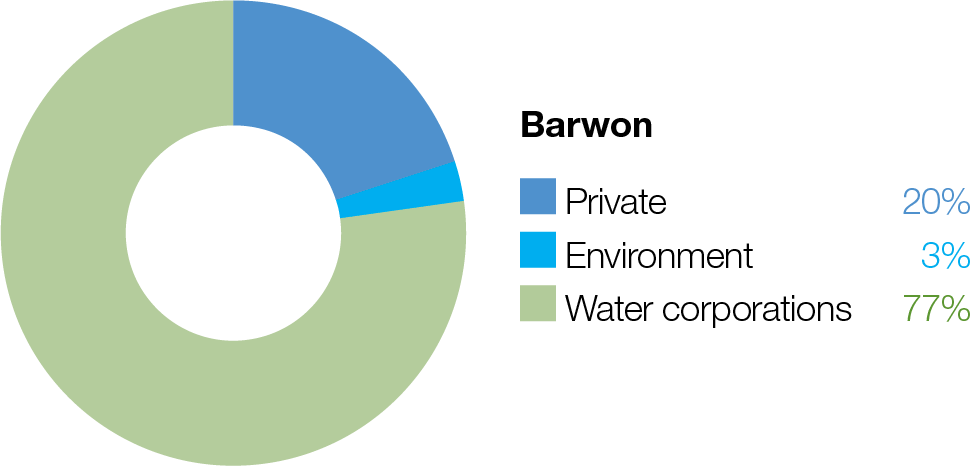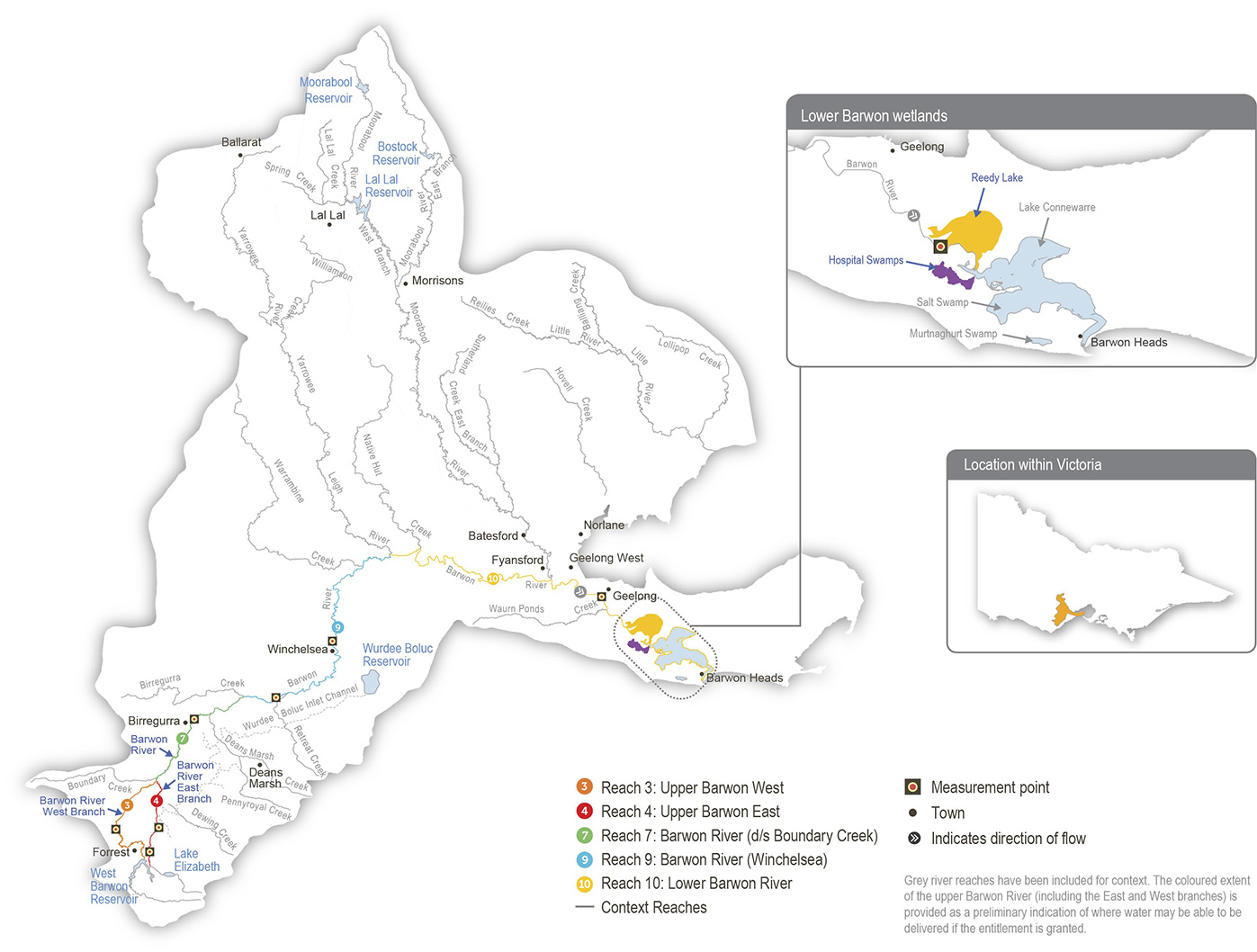Reedy Lake and Hospital Swamps form part of the internationally recognised Port Phillip Bay (Western Shoreline) and Bellarine Peninsula Ramsar site, which is used by many thousands of migratory birds from around the world. The wetlands support 47 known threatened plant and animal species and communities. These include some of Victoria’s rarest species (such as the brolga, orange-bellied parrot, Australasian bittern, growling grass frog, Australian grayling and dwarf galaxias) and subtropical and temperate coastal saltmarsh communities. Reedy Lake also supports a range of vegetation communities, including coastal saltmarsh, herbfields and reed beds.
Reedy Lake was naturally a partly ephemeral system, but river regulation meant the lake was nearly permanently wet from the 1970s until 2016. This long-term wetting resulted in a decline in biodiversity, so wetting and drying regimes are now recommended to maintain the lake’s ecological character and diverse habitats.
Following a four-year (2016-17 to 2019-20) watering regime trial at Reedy Lake, the Lower Barwon Review in 2020 proposed to implement a long-term, seasonally adaptive water regime that avoids complete drying. At Reedy Lake, this means having the wetland full for a quarter of all years and having a partial drawdown in summer and autumn in three-quarters of all years. The review’s recommendations informed 2023-24 watering actions and future directions.
Hospital Swamps comprises five wetland basins that support important ecological processes and significant ecological values, including large areas of threatened coastal saltmarsh and diverse waterbird communities. Hospital Swamps has retained a more natural wetting and drying pattern. As a result, the swamp’s vegetation community has remained largely unchanged since the 1980s.



